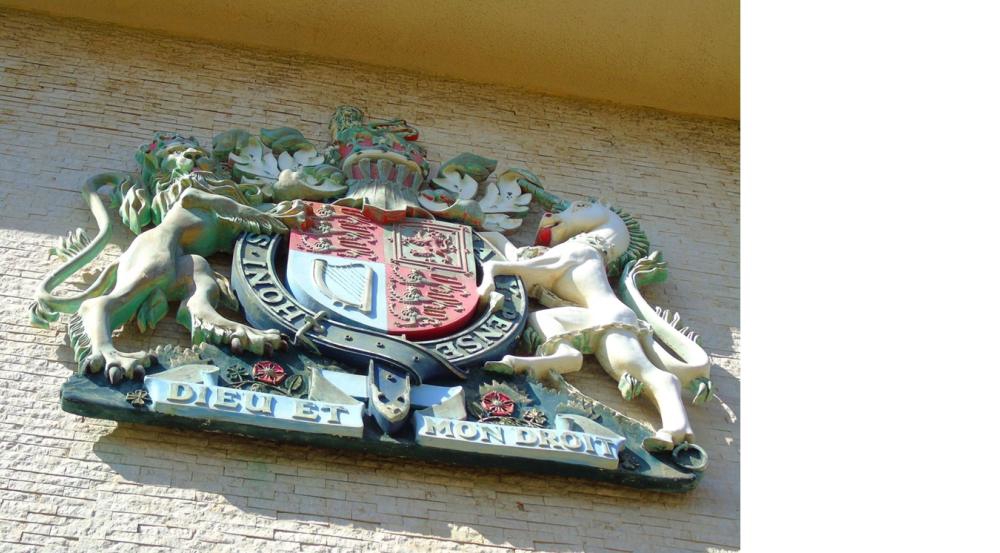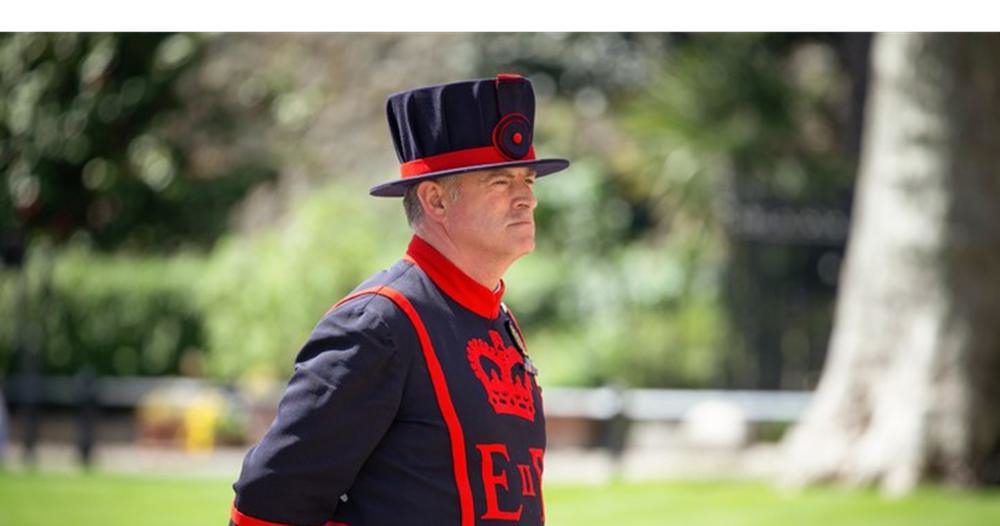Lieutenancy of South Yorkshire
The Lord-Lieutenant's uniform
For formal occasions Lord-Lieutenants wear a military-style uniform. It's comprised of a crimson and silver sash, trouser or skirt and a forage cap. It has a scarlet band and gold embroidered badge with silver oak leaf embroidery on the peak. They can carry a sword with a Mameluke hilt and scimitar blade. Footwear is boots and spurs for males and shoes for females.
The Deputy Lieutenant's uniform
Vice Lord-Lieutenants wear a uniform based on military No.1 dress. Deputy lieutenants may choose to wear the same uniform.
A Sam Browne belt and sword complete the uniform and medals can be worn on certain occasions.
Male Deputy Lieutenant's badge
In plain clothes, a male Deputy Lieutenant may wear a neck badge when representing the Lord-Lieutenant.

Female Deputy Lieutenant's badge
In plain clothes, a female Deputy Lieutenant may wear a badge on a Court Bow when representing the Lord-Lieutenant.

The Lord-Lieutenant's flag and crest
The Lord-Lieutenant's flag was approved by King George V on 8 December 1910. It's design is a Union Jack with a crown above a horizontal gold sword.
The Lord Lieutenant's Crest, Dieu et mon droit (God and my right) is used as the motto of English and later British monarchs. This has been the case since first being adopted by Henry V.

The Tudor Rose
The Tudor Rose is one of the most well-known flowers in England. This specific type of rose is red (around the outside) and white (in the centre). It's been in use as the country’s plant emblem since the Tudor era.
There's more to the Tudor Rose than meets the eye. The flower is a representation of the merging of two warring houses. It also depicts the end of years of conflict.
The Tudor Rose is a common sight in England even today. The floral emblem can be seen on a number of old buildings, most notably Hampton Court Palace. It was built during the reign of Henry VII’s son, King Henry VIII.
It's also used as a symbol of the Lieutenancy.
Nowadays, the badge is found on the UK Royal Coat of Arms. It's also on the uniforms of the Yeoman Warders at the Tower of London, and even on the back of 20p coins (1982-2008).
The history of the Tudor Rose
The history begins in the 13th century, when the rose was introduced in England as a royal emblem. It was introduced by Eleanor of Provence, the wife of King Henry III. Eleanor used the golden rose of Provence as her badge while she was Queen Consort. The emblem was later adopted by her son, Edward I.
It wasn’t until the 15th century, during the period of conflict between the Houses of York and Lancaster, that the rose became the floral badge of England.
When King Edward III died in 1377, he was succeeded by his grandson, Richard II. Although the beginning of his reign had been marked by hope and prosperity, Richard grew increasingly unpopular. In 1399 he was deposed by his cousin, Henry Bolingbroke, who ruled as Henry IV. The new King was the son of John of Gaunt, the Duke of Lancaster and the third son of the late King Edward.
Henry IV was succeeded by his son, another Henry, who strengthened the Lancastrian hold on the throne through. He did this through his victories in the Hundred Years War against France.
Henry V died of dysentery in 1422, leaving his nine month-old son, Henry VI, to rule the country. Throughout the new King Henry’s minority, England was controlled by regents. Even as an adult, the King was in no state to rule. Not only was he a weak and ineffective leader, but Henry VI also displayed many signs of mental illness. He often succumbed to bouts of insanity, and failed to recognise his son, Prince Edward, who was born in 1453.
Richard, Duke of York, a descendant of Edward III’s fourth son, Edmund of Langley, staked his claim to the throne. The Duke had a powerful ally in Richard Neville, the Earl of Warwick. Together with their armies, the two of them marched into London to overthrow the mad King Henry. This was the beginning of a Civil war between the two greatest factions in England - the House of Lancaster and the House of York.
The War of the Roses
The War of the Roses was sometimes known as the Cousins’ War. This is because both Richard, Duke of York, and King Henry VI were directly descended from Edward III and therefore cousins. The name is derived from the heraldic badges used by the two houses. These are the Red Rose of Lancaster and the White Rose of York.
The War of the Roses came to an end with the Battle of Bosworth in 1485. King Richard III was defeated by the Lancastrian claimant, Henry Tudor, who ascended the throne as Henry VII.
King Henry secured the succession and cemented his claim to the throne by marrying Elizabeth of York. Elizabeth was the daughter of the Yorkist King Edward IV.
Why the Tudor Rose was created
The Lancastrian Henry Tudor’s marriage to Elizabeth of York united the two Houses. Their marriage united the two warring houses once and for all. It was around this time that Henry VII introduced the Tudor Rose, which combined the red rose of Lancaster with the white rose of York. The Tudor Rose was adopted as the national emblem of England, and was a symbol of peace and unity in the period following the long civil war.

